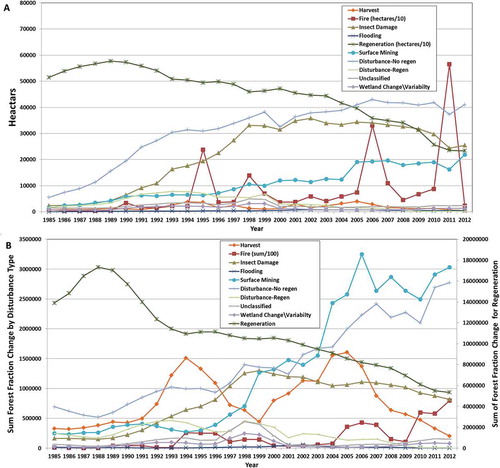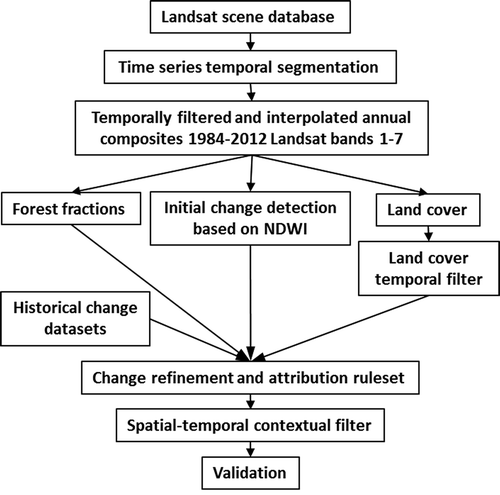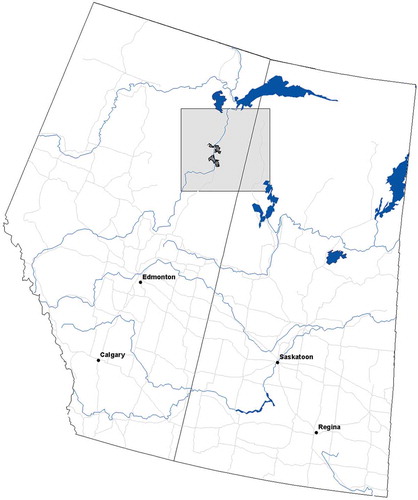Figures & data
Table 1. Change classes and rulesets used for change type classification.
Figure 3. Example time series for harvesting in 1989 and fire in 2011 (A–B) and insect damage (C–D). Cloud- and shadow-screened time series are shown as asterisks. Blue line represents average value in each year. Sub-trend time series results (red line) from the average values shown as the black line.
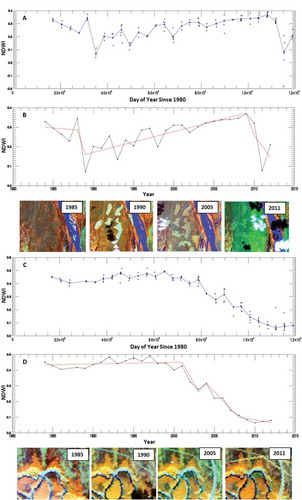
Table 2. Change/no-change error matrix.
Table 3. Change type error matrix.
Table 4. Change error timing estimates by change type.
Table 5. Land-cover error matrix.
Figure 4. Summary of the change types for most recent change (A), year of most recent change (B), change severity of most recent change (C), and Landsat composite for 2012 for comparison (D).
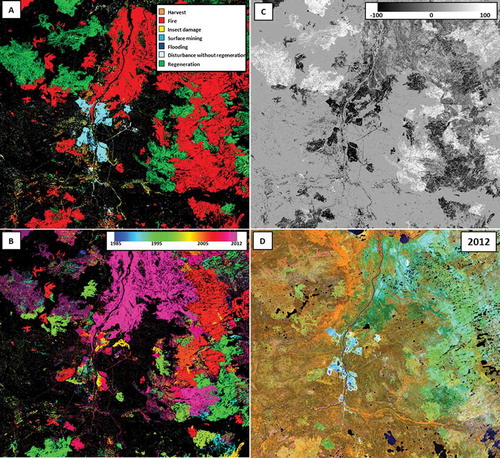
Figure 5. Trends in change type. (A) Pixel count converted to hectares and (B) Sum of forest fraction change by change type. Note the scaling for fire and the secondary axis used for regeneration to enhance interpretability. In (B), all disturbances have been multiplied by −1 and actually represent a negative forest fraction change.
